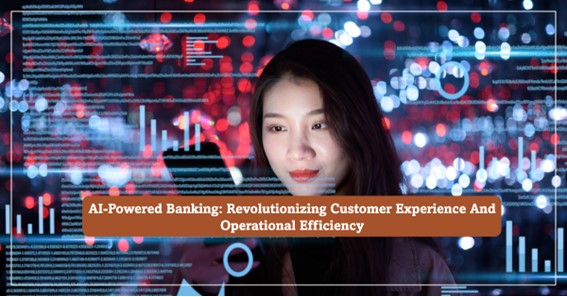According to a study conducted by Allied Market Research, the business value of artificial intelligence (AI) in banks stood at $3.88 billion in 2020, and the figure is projected to hit $64.03 billion by 2030. From these statistics, it is evident that banks are investing heavily in securing AI technologies.
The projected $64.03 billion figure lies on the low end of the spectrum. Statista projects a business value of AI by banks to hit $300 billion by the end of the decade, with the Asia Pacific region accounting for circa $99 billion.
This article highlights how AI revolutionizes customer experience and operational efficiency in the banking industry. Read on to find out more.
1. Enhanced Customer Service Delivery
Traditionally, customer service delivery by banks suffered from technicalities such as limited business hours. Today, AI technologies such as chatbots have helped improve customer experience.
The use of chatbots is one of the major benefits of AI in banking sector. Unlike a human employee, chatbots are available 24/7. Customers are becoming increasingly comfortable using programmed software to interact with their banks.
Although chatbots are not entirely new to the banking sector since some banks have been using them, the COVID-19 pandemic underscored their usefulness. Banks use chatbots to field customer service inquiries and to inform their customers of additional offerings and services.
2. Reduced Operational Risks and Costs
Digitization of banking processes, including the use of artificial intelligence, helps lower operational costs and risks associated with conventional banking techniques. AI in banking achieves this by minimizing the potential for human error.
For instance, Robotic Process Automation (RPA) is software designed to mimic rule-based digital tasks that were conventionally performed by humans. When used in the banking industry, RPA aids in the elimination of labor-intensive and error-prone tasks associated with gathering client data from forms, contracts, and other sources.
RPA bots are intelligent process automation tools that may be used for various banking procedures since they use AI technology like natural language processing. Banking institutions essentially reduce labor expenses while lowering the possibility of human mistakes.
3. Enhanced Compliance and Regulatory Oversight
Artificial intelligence in banking enhances regulatory supervision and compliance. Banks must comply, and failure to do so can result in significant statutory fines. Banking organizations may use AI to make sure that rules like the Know Your Customer (KYC) and anti-money laundering (AML) legislation are followed.
AI-based solutions can also aid in spotting possible compliance concerns before they become serious difficulties. This enables management at the bank to respond quickly to address the situation. Automatons enabled by AI can also process documents more quickly and make fewer mistakes.
4. Risk Assessment and Credit Risk Management
To estimate the chance of a credit application defaulting on a loan, banks might employ AI for risk management. Additionally, artificial intelligence can estimate the severity of the resulting loss from credit default. This way, management personnel will be better positioned to decline or approve loans.
AI-powered systems can also play an active role in enhancing the loan servicing process. For instance, a bank can use AI conversational assistants to engage customers and help them meet debt obligations.
5. Personalization of Customer Experience
With the right AI tools, banks can personalize the customer experience. Considering that banks collect tons of data on each customer, they can employ the power of AI to analyze this data and offer recommendations based on each customer’s unique behavior.
Banks can then tailor the personalized suggestions generated by AI based on customers’ expressed goals. For instance, if a customer intends to save for a huge budget purchase like a downpayment on a new home, the bank can suggest a specific plan that takes into account both the customer’s objective and the surrounding data, such as their income, spending habits, etc.
This way, banks can offer each customer a financial advisor that they can carry in their pocket and hold in their palm. As AI technology advances, this virtual financial advisor will have the power to not only suggest how best to manage your account but also how to do your taxes.
Summary: Banking Redefined
The banking industry keeps changing by the day, thanks to rapid changes in legislation and an increasingly volatile market. To stay ahead of the competition, banks are turning to artificial intelligence to deliver enhanced banking solutions to new and loyal customers alike. AI offers a competitive edge, which explains why a majority of banking institutions are adopting AI-powered technologies.
With AI, the banking sector can streamline accounting, reduce operational costs, gather and consolidate data, offer 24/7 customer support, substantially reduce fraud, and create a great customer experience.
The objective is to drive more business operations, comprehensive risk identification, multichannel customer engagement, compliance response, and more. AI has made the banking experience seamless for both customers and banks.
Click Here – 5 Amazing Ways To Embrace Patriotism Through Fashion

